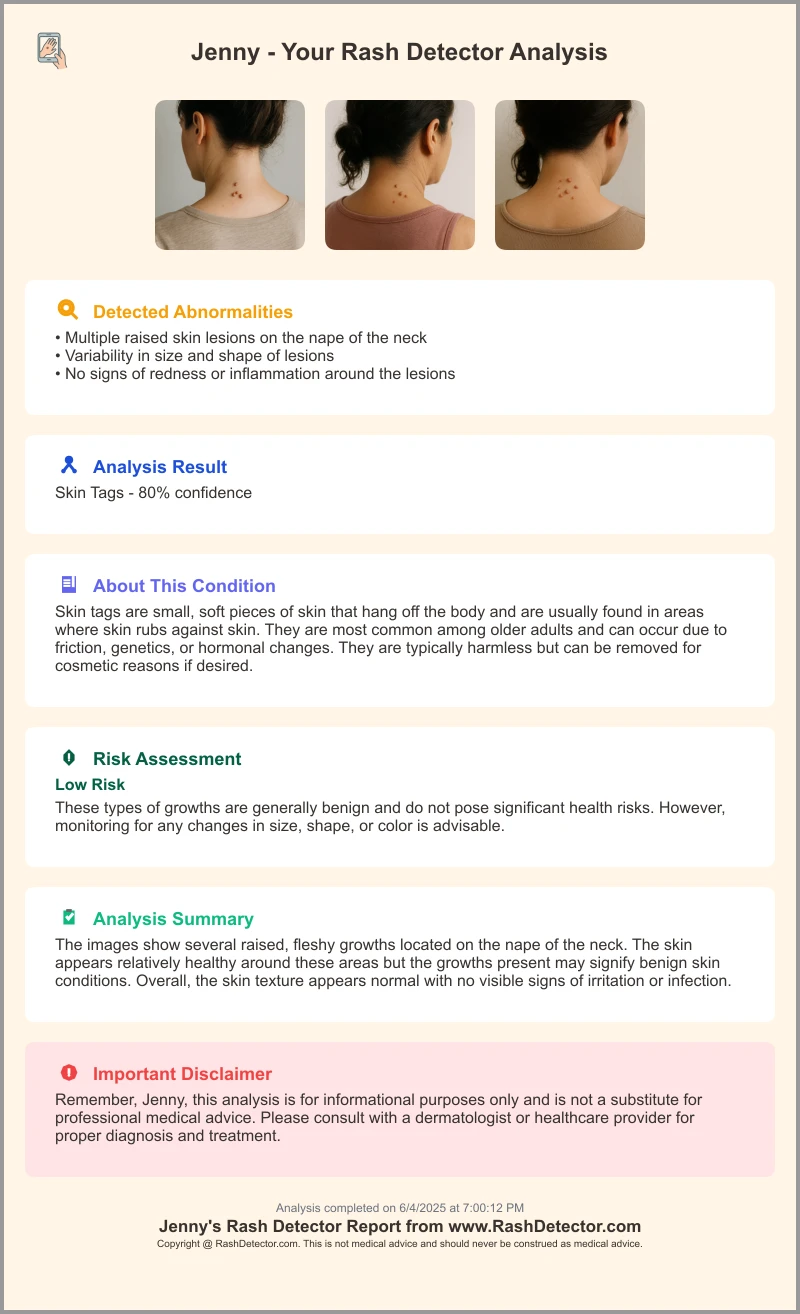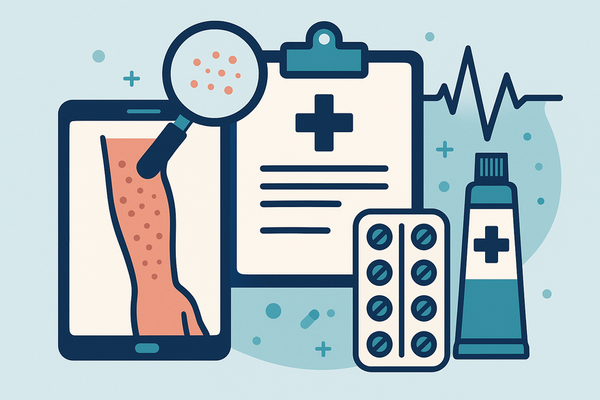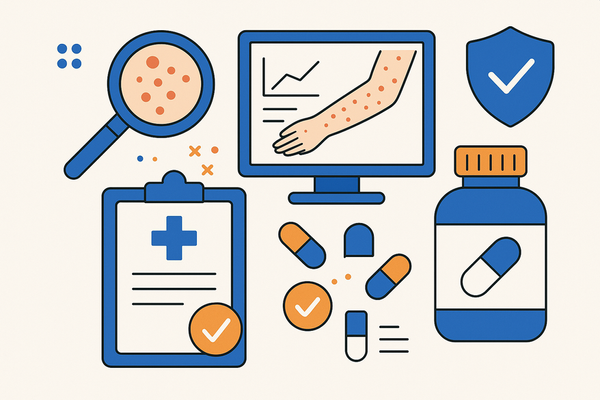Medication Rash Treatment: A Guide to Managing Drug-Induced Skin Reactions
Learn effective medication rash treatment techniques to prevent complications from drug-induced skin reactions. Identify, manage, and prevent rashes safely.

Estimated reading time: 8 minutes
Key Takeaways
- Medication-induced rashes range from mild itchiness to life-threatening emergencies like Stevens–Johnson syndrome.
- Early recognition and trigger tracking are crucial to identify the offending agent and manage symptoms.
- Over-the-counter remedies include antihistamines, topical corticosteroids, and soothing agents for mild reactions.
- Prescription treatments may involve oral corticosteroids, immunomodulators, or epinephrine in cases of anaphylaxis.
- Preventive measures include careful medication history, allergy testing, and maintaining a detailed medication diary.
Table of Contents
- What Is a Medication-Induced Rash?
- Signs & Symptoms of Medication-Induced Rashes
- Medication Rash Treatment Strategies
- Preventing Medication-Induced Rashes
- When to Seek Help for Medication-Induced Rashes
What Is a Medication-Induced Rash?
A medication-induced rash refers to any abnormal skin reaction triggered directly by a drug. These reactions can arise via:
- Immune mechanisms — allergic responses where the body’s defenses target the drug as a foreign threat
- Non-immune pathways — direct toxicity, irritation, or photosensitivity
Unlike infections, environmental allergens, or chronic dermatologic conditions, drug rashes often:
- Correlate with starting a new medication or changing dose
- Appear days to weeks after initiation
- Resolve when the offending drug is withdrawn
Common drug classes causing rashes include antibiotics, NSAIDs, anticonvulsants, and diuretics.
Signs & Symptoms of Medication-Induced Rashes
Identifying drug-induced reactions early is critical. Watch for:
- Redness and swelling — localized inflammation or diffuse erythema
- Pruritus (itching) — often intense, driving scratching and discomfort
- Raised bumps, blisters, or urticarial wheals — can coalesce into larger patches
- Peeling or sloughing skin — a sign of severe cutaneous reactions
- Fixed drug eruptions — dark, sometimes blistered patches that recur at the same site on re-exposure
Distinguishing mild vs. severe reactions:
- Mild: limited redness, small papules, localized itching
- Severe: widespread blistering (Stevens–Johnson syndrome, toxic epidermal necrolysis), mucosal involvement, anaphylaxis signs, high fever, lymphadenopathy
Step-by-Step Trigger Tracking:
- Compile a full list of prescription drugs, over-the-counter medications, and supplements.
- Record rash onset date, body location, progression, and related symptoms.
- Note any improvement after drug discontinuation (consult before stopping any medication).
- Emphasize the temporal link between drug changes and rash appearance to suggest causality.
For a deeper dive, see Identifying and Managing Drug-Induced Rash Symptoms.
Medication Rash Treatment Strategies
Core Principle: Under healthcare supervision, discontinue the suspected drug. Never stop essential medications without consulting a provider.
Over-the-Counter (OTC) Options
- Oral antihistamines
- Cetirizine 10 mg once daily reduces histamine-mediated itching
- Diphenhydramine 25–50 mg every 6 hours for short-term relief (may cause drowsiness)
- Topical corticosteroids
- Hydrocortisone 0.5–1% cream applied twice daily to inflamed areas
- Soothing agents
- Calamine lotion to ease itching
- Colloidal oatmeal baths for cooling, anti-inflammatory effect
- Cool compresses for symptomatic relief
For added convenience, you can upload rash photos to an AI skin analysis tool like Rash Detector to receive a quick preliminary report.

Prescription Treatments
- Oral corticosteroids
- Prednisone 0.5–1 mg/kg/day tapered over 5–10 days for moderate-to-severe rashes
- Immunomodulators
- Cyclosporine under specialist guidance for life-threatening hypersensitivity
- Epinephrine auto-injector
- 0.3 mg IM for adults at first signs of anaphylaxis
- Hospitalization
- Supportive burn-unit protocols, IV fluids, wound care for Stevens–Johnson syndrome/toxic epidermal necrolysis
Supportive Care & Home Remedies:
- Wear loose, breathable cotton clothing
- Use fragrance-free, gentle cleansers and moisturizers
- Keep skin cool; avoid hot showers and excessive scrubbing
- Trim nails; consider mittens for children to discourage scratching
Preventing Medication-Induced Rashes
Prevention is better than cure. Implement these steps:
- Communicate all drug allergies at every healthcare visit and keep up-to-date allergy documentation.
- Initiate new medications cautiously, especially during the first 2–4 weeks when most reactions occur.
- Ask about allergy testing, such as skin prick or patch tests.
- Discuss cross-reactivity; e.g., penicillin-allergic patients may tolerate certain cephalosporins after testing.
- Maintain a detailed medication diary listing drug name, dose, start date, rash onset, characteristics, resolution, and any treatments used.
For more on long-term safety, see Managing Drug Allergy Rash.
When to Seek Help for Medication-Induced Rashes
Certain symptoms demand immediate professional attention. Seek help if you experience:
- Difficulty breathing, swallowing, or throat tightness
- Rapidly spreading blistering or skin detachment (> 30% body surface area)
- Mucosal involvement (eyes, mouth, genitalia)
- High fever, low blood pressure, or systemic organ involvement
- Fast-progressing rash with chills, joint pain, or swollen lymph nodes
Action Steps:
- For anaphylaxis, call 911 or go to the nearest emergency department.
- Otherwise, contact your prescribing provider or an allergy/dermatology specialist urgently.
- Provide a clear timeline linking medication changes to rash onset and bring full medication and allergy records.
- Request written allergy documentation for future reference.
FAQ
- What is a medication-induced rash?
Any abnormal skin reaction caused directly by a drug, ranging from mild redness to severe blistering. - How quickly do drug rashes appear?
They often emerge days to weeks after starting or changing a medication dose. - When should I see a doctor?
If you experience severe symptoms like difficulty breathing, widespread blistering, or mucosal involvement. - Can I treat mild reactions at home?
Yes. Over-the-counter antihistamines, topical corticosteroids, and soothing baths can help mild cases. - How can I prevent future rashes?
Maintain a detailed medication diary, inform providers of all allergies, and consider allergy testing before new drugs.





